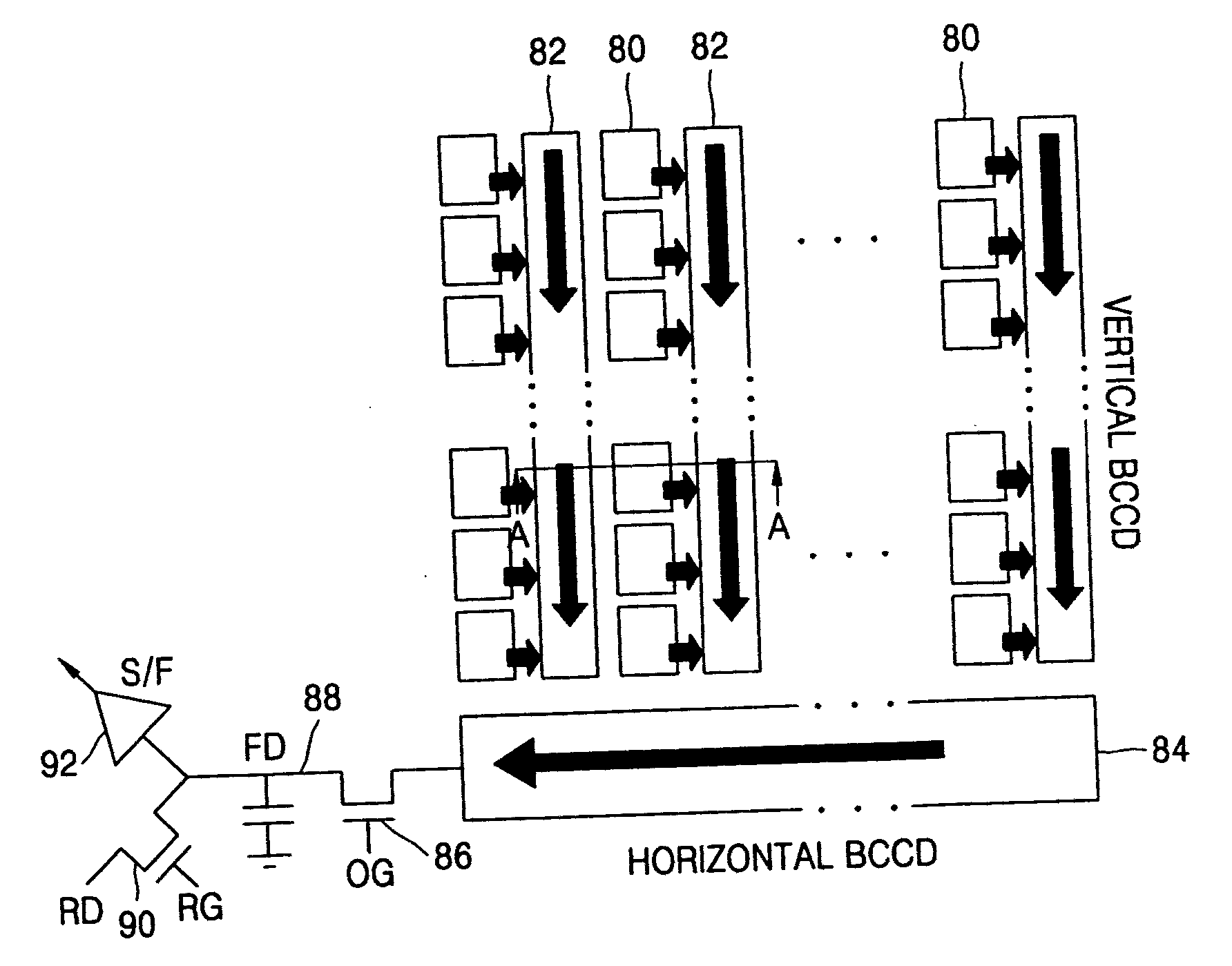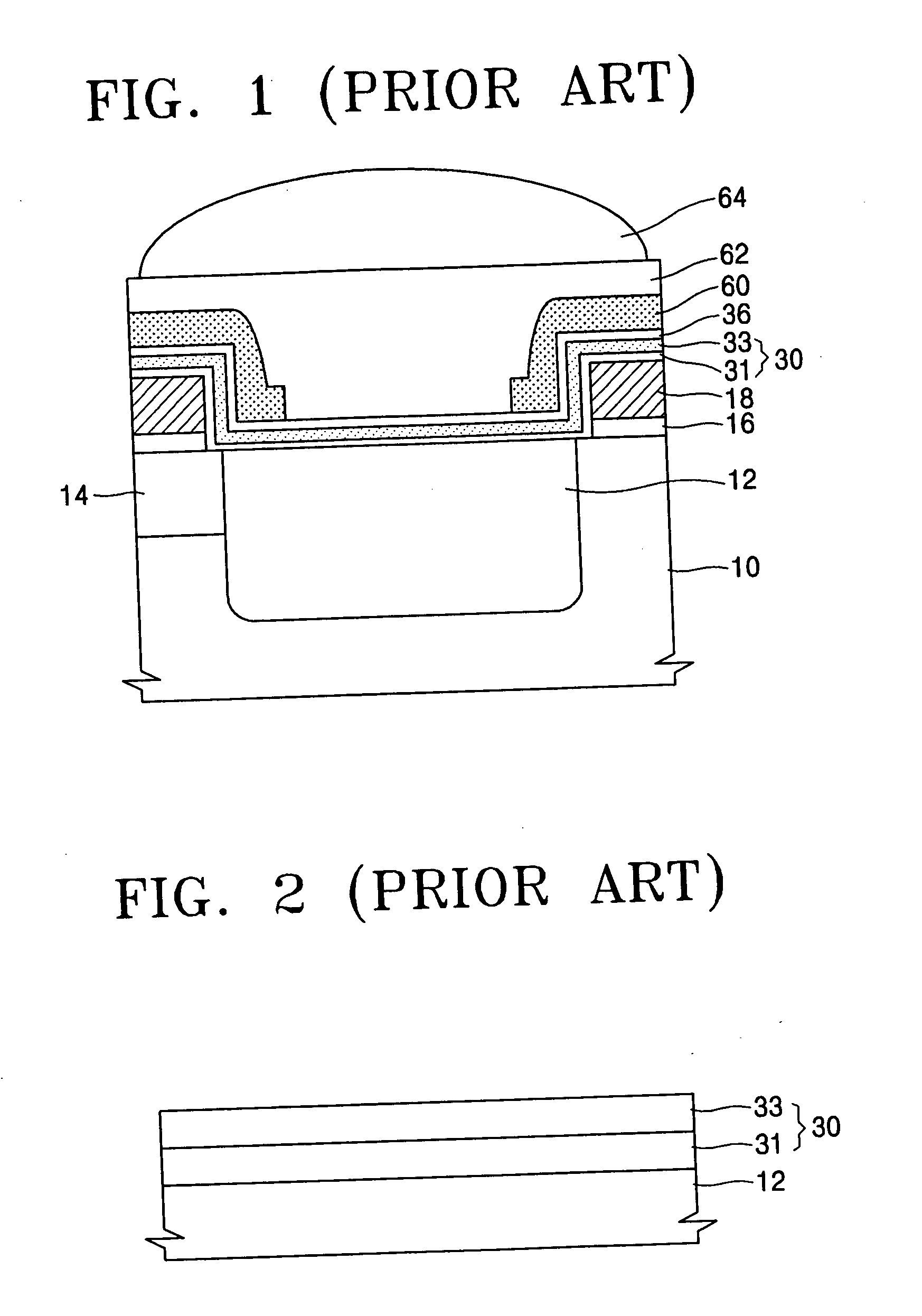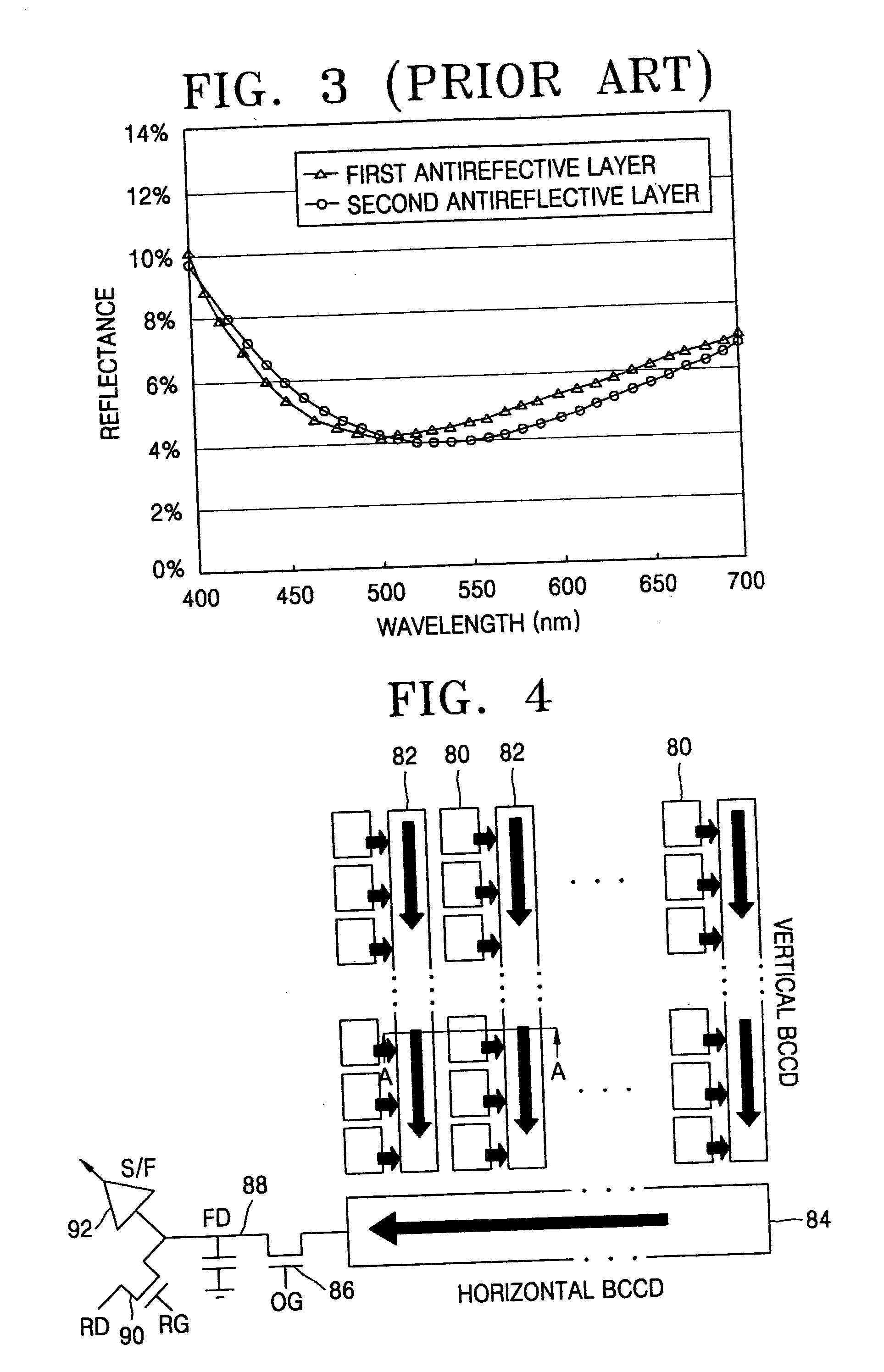Image sensor and method for manufacturing the same
a technology of image sensor and manufacturing method, which is applied in the direction of instruments, semiconductor/solid-state device details, radiation control devices, etc., can solve the problems of limiting device sensitivity, affecting information presented on the display, and reducing the amount of light available in the light-receiving region of the device, so as to increase the efficiency of photon transfer and increase efficiency
- Summary
- Abstract
- Description
- Claims
- Application Information
AI Technical Summary
Benefits of technology
Problems solved by technology
Method used
Image
Examples
first embodiment
[0058]FIGS. 6A-6F are cross-sectional views of a process for forming an image sensor in accordance with the present invention. In the drawings of FIGS. 6A to 6F, a CCD device image sensor is depicted; however, the principles of the present invention apply equally well to CIS-type image sensors, and other forms of image sensors, and methods of fabrication thereof,
[0059]FIG. 6A is a cross-sectional view of the CCD device of FIG. 4 taken along section line A-A. With reference to FIG. 6A, a p type well 101 is formed in a region of a semiconductor substrate 100, for example a silicon-based substrate. The p type well 101 is formed by implanting boron B at an energy level of 3 MeV, and a dopant concentration of 2E11 / cm2. A photon-receiving region 102 is formed in the p type well 101 by implanting arsenic As at an energy level of 800 eV, and a dopant concentration of 2E11 / cm2. A p+ type channel stop region 110 is formed at a first side of the photon-receiving region 102 by implanting a p ty...
second embodiment
[0070]FIGS. 7A-7E are cross-sectional views of a process for forming an image sensor in accordance with the present invention.
[0071]FIG. 7A is a cross-sectional view of the CCD device of FIG. 4 taken along section line A-A in accordance with a second embodiment of the present invention. In the same manner as the embodiment shown in FIG. 6E, the solid state imaging device of FIG. 7A includes a first silicon dioxide layer 131 and a first silicon oxynitride layer 133. However, prior to patterning of the silicon oxynitride layer 133 as shown in FIG. 6F of the first embodiment, the present second embodiment includes a second silicon dioxide layer 141 and a silicon nitride layer 143 that are sequentially formed on the silicon oxynitride layer 133. Therefore, in this embodiment, the anti-reflection layer 140 includes the first silicon dioxide layer 131, the silicon oxynitride layer 133, the second silicon dioxide layer 141, and the silicon nitride layer 143, applied sequentially. As in the...
third embodiment
[0077]FIGS. 8A-8D are cross-sectional views of a process for forming an image sensor in accordance with the present invention
[0078]FIG. 8A is a cross-sectional illustration of a solid state imaging device having a multiple layered anti-reflection layer 140 applied in a manner similar to that described above with reference to FIG. 7A. In this embodiment, a hard mask 200, for example comprising silicon dioxide, is layered on the anti-reflection layer 140.
[0079] Referring to FIG. 8B, the hard mask 200 is patterned to form a patterned hard mask 200′ according to conventional photolithographic techniques in a region above the photon-receiving region 102 as shown.
[0080] Referring to FIG. 8C, the silicon nitride layer 143′ is etched in a wet etch process using phosphoric acid (H3PO4) as an etch solution.
[0081] Referring to FIG. 8D, the second silicon dioxide layer 141′ and the silicon oxynitride layer 133′ are subsequently etched using a wet etching process utilizing hydrofluoric acid (...
PUM
 Login to View More
Login to View More Abstract
Description
Claims
Application Information
 Login to View More
Login to View More - R&D
- Intellectual Property
- Life Sciences
- Materials
- Tech Scout
- Unparalleled Data Quality
- Higher Quality Content
- 60% Fewer Hallucinations
Browse by: Latest US Patents, China's latest patents, Technical Efficacy Thesaurus, Application Domain, Technology Topic, Popular Technical Reports.
© 2025 PatSnap. All rights reserved.Legal|Privacy policy|Modern Slavery Act Transparency Statement|Sitemap|About US| Contact US: help@patsnap.com



